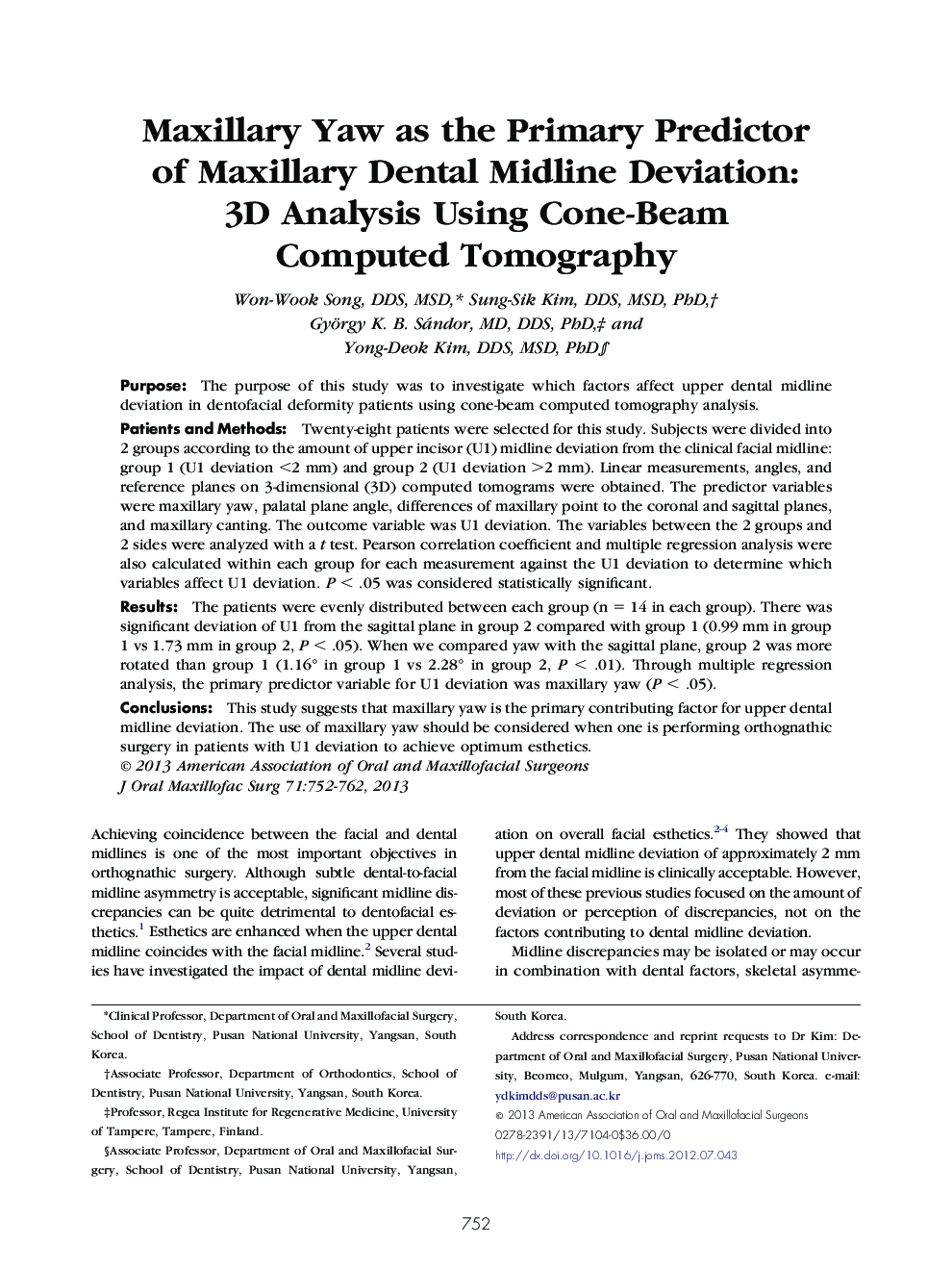| کد مقاله | کد نشریه | سال انتشار | مقاله انگلیسی | نسخه تمام متن |
|---|---|---|---|---|
| 3156576 | 1198128 | 2013 | 11 صفحه PDF | دانلود رایگان |

PurposeThe purpose of this study was to investigate which factors affect upper dental midline deviation in dentofacial deformity patients using cone-beam computed tomography analysis.Patients and MethodsTwenty-eight patients were selected for this study. Subjects were divided into 2 groups according to the amount of upper incisor (U1) midline deviation from the clinical facial midline: group 1 (U1 deviation <2 mm) and group 2 (U1 deviation >2 mm). Linear measurements, angles, and reference planes on 3-dimensional (3D) computed tomograms were obtained. The predictor variables were maxillary yaw, palatal plane angle, differences of maxillary point to the coronal and sagittal planes, and maxillary canting. The outcome variable was U1 deviation. The variables between the 2 groups and 2 sides were analyzed with a t test. Pearson correlation coefficient and multiple regression analysis were also calculated within each group for each measurement against the U1 deviation to determine which variables affect U1 deviation. P < .05 was considered statistically significant.ResultsThe patients were evenly distributed between each group (n = 14 in each group). There was significant deviation of U1 from the sagittal plane in group 2 compared with group 1 (0.99 mm in group 1 vs 1.73 mm in group 2, P < .05). When we compared yaw with the sagittal plane, group 2 was more rotated than group 1 (1.16° in group 1 vs 2.28° in group 2, P < .01). Through multiple regression analysis, the primary predictor variable for U1 deviation was maxillary yaw (P < .05).ConclusionsThis study suggests that maxillary yaw is the primary contributing factor for upper dental midline deviation. The use of maxillary yaw should be considered when one is performing orthognathic surgery in patients with U1 deviation to achieve optimum esthetics.
Journal: Journal of Oral and Maxillofacial Surgery - Volume 71, Issue 4, April 2013, Pages 752–762